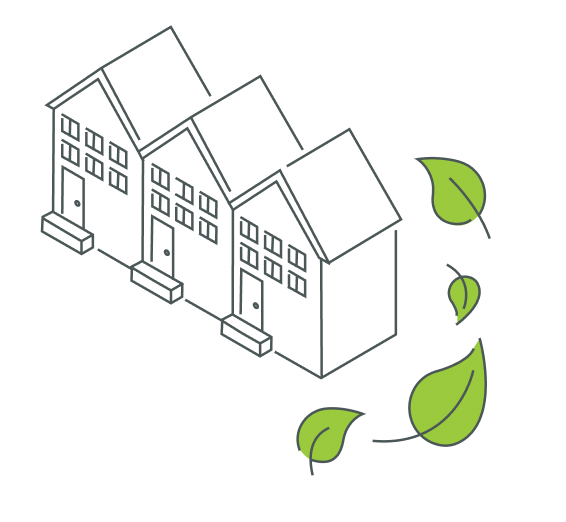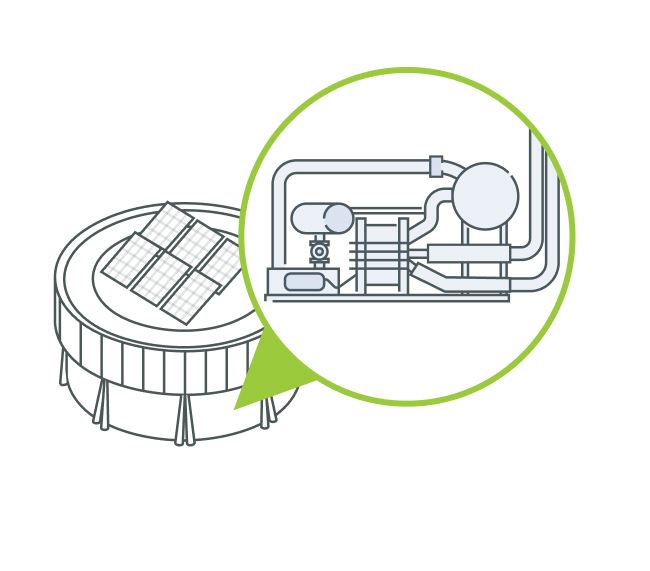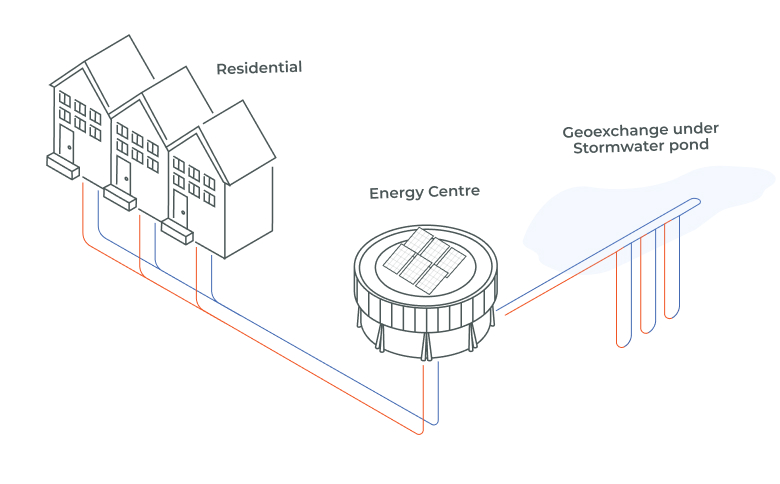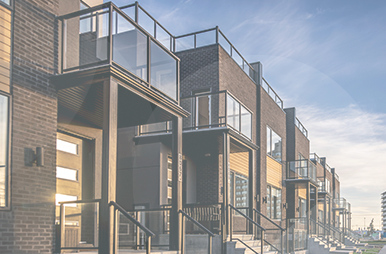Sustainability
Innovation is in our DNA.
Our shared renewable energy system is a truly local solution that residents and Edmontonians can take great pride in—and people across the globe can be inspired by.
We use the world’s best renewable energy technology, right in the heart of our city. Our District Energy Sharing System will combine geothermal, solar and other sustainable energy sources to deliver reliable heating, cooling and hot water to your home or business.
Our renewable energy is essential to making Blatchford a sustainable community. But it doesn’t end there. Blatchford is also building energy-efficient homes and using green infrastructure like stormwater management, biodiverse landscaping, and urban agriculture to create a truly sustainable neighbourhood.
Energy Strategy
Building a truly sustainable development like Blatchford requires an ambitious approach to energy usage, plus a dash of creativity and innovation!
Blatchford uses three linked strategies—conservation, efficiency and the use of renewables – to minimize the neighbourhood’s environmental impact and ensure community energy resiliency.
Conservation:
First, we minimize the amount of energy needed. Blatchford homes and buildings use significantly less energy right from the very start as all builders are required to construct their homes and businesses to meet or exceed the community’s mandatory green building codes. These codes require high performance building envelopes, high-efficiency energy systems and other sustainable building features.

Efficiency:
Now that the amount of energy needed has been reduced through conservation, the energy that is still required for heating, cooling and providing hot water to buildings is delivered through a highly energy efficient District Energy Sharing System. In addition to using highly efficient heat pump technology, the system shares energy between buildings by capturing excess energy and distributing it to other buildings across the neighbourhood. It can also share energy between seasons (store heat energy in the summer to be used in the winter).

Renewables:
Renewable energy sources, like geoexchange and sewer heat exchange, tie into the District Energy Sharing System. For the first stage of residential development, a geoexchange field that harnesses the shallow geothermal energy below the earth’s surface boreholes is located under the stormwater pond in the central park.

Greenhouse Gas Emissions
In any community, how energy is used has a significant impact on the environment. The way we traditionally heat and cool our homes is a major source of greenhouse gas emissions. To reduce our carbon footprint and create a sustainable future, we need to rethink how we heat and cool our homes
By implementing the comprehensive Blatchford energy strategy, homes and buildings will emit about 75% fewer greenhouse gas emissions than buildings in a typical neighbourhood.
As solar is implemented, or as future renewable energy sources become viable, Blatchford has the potential to reduce its greenhouse gas emissions associated with heating, cooling and domestic hot water by 100%.
Our current modelling is showing that Blatchford will reduce approximately 29,319 metric tons of greenhouse gas emissions annually once the community is fully developed.
This reduction is equivalent to:


Conservation and Sustainability Tips
Between the District Energy Sharing System and the community’s green building codes, your home is already leading the way in the efficient use of energy and water. We’re making a difference and you can feel proud to be part of it.
But we can all take extra steps to make our homes and our lives even more eco-friendly.
City of Edmonton Initiatives
The benefits of the entire Blatchford community, including its District Energy Sharing System, go beyond the neighbourhood.
By designing a community for sustainable living from the ground up, Blatchford and Blatchford Renewable Energy support the City of Edmonton’s overall goal to protect our environment.
We are contributing to the sustainability goals outlined in a number of City of Edmonton strategies and plans, including:
Edmonton’s Community Energy Transition Strategy is a risk management strategy designed to make Edmonton an energy sustainable city. This includes actions that will reduce Edmonton’s greenhouse gas (GHG) emissions to levels consistent with limiting the long-term rise in the average global temperature to 2 degrees Celsius.
The Climate Resilient Edmonton: Adaptation Strategy and Action Plan was developed to help us respond to the impacts of climate change and protect the community, infrastructure and services.
ConnectEdmonton is the strategic plan that sets the direction for Edmonton’s future. Climate resilience has been identified as one of the four goals of the plan: Edmonton is a city transitioning to a low carbon future, has clean air and water and is adapting to a changing climate.




